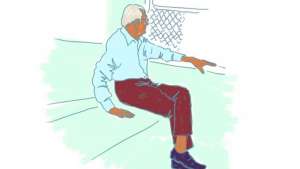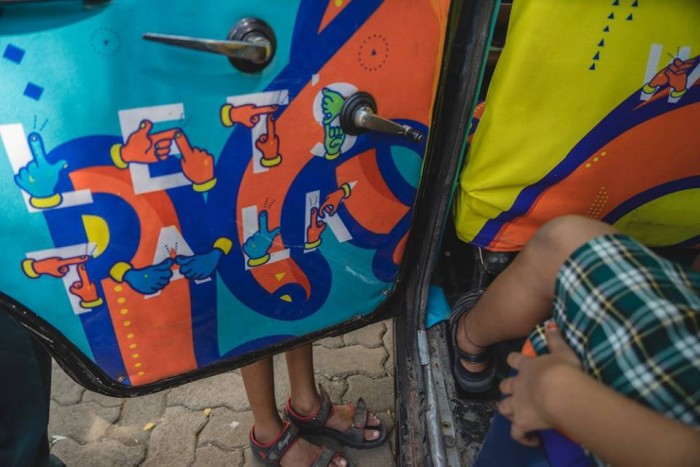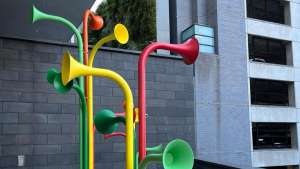From the Series
The population of deaf and mute people in India stands at 15 million, the largest in the world. In order to bridge the gap between this population and people who don’t understand sign language, designer Harshit Vishwakarma teamed up with Taxi Fabric to introduce the public to sign language in a colourful, engaging way.
Taxi Fabric is a largely self-funded project that connects young Indian designers with taxi cab drivers, giving them a platform to show off their storytelling skills. Its initial purpose was to change the perception amongst older generations in India who believe that design is not a worthwhile occupation.
Now, the project hopes to change the way the public looks at disability by enabling conversation.
“After having experienced the prevailing gap between the deaf and the hearing communities in my college years, I wanted to intervene. There are more sign language users in Bombay than in all of Europe,” Vishwakarma was quoted as saying.
Vishwakarma’s design incorporate colourful, vibrant, illustrated hands displaying the alphabet in sign language with English alphabets for viewers to identify how the signs relate to the letters of the alphabet.
“Taxi Fabric was an opportunity to create a fun, engaging way for deaf as well as hearing individuals to learn how to finger spell in Indian Sign Language, especially all the alphabets. So the next time they meet a deaf person they don't feel tongue-tied.”
Vishwakarma believes design as a vocation is still viewed as a luxury in India, "The possibilities around design and how it can solve problems are not well understood. So it gets tough to make people understand what I do for a living. Sometimes I make up pretentious terms to confuse them even more. Which is a lot of fun! Like calling myself a Diagramatist.”
The project has grown to about 30 Taxi Fabrics since it launched in 2015.
It has resulted in a collaboration, which took place last month, with fashion illustrator Katie Rodgers for a collection entitled Lotus Dance. The participants, who were part of the Design Fabric Festival in MUmbai, got to create a series of illustrations which were curated, and then digitally printed onto yards of fabric, to create the upholstery of an exclusive taxi.
More on textile design:
Ify Ojo tells the stories we never hear through textile design
Jalila Essaïdi’s project turns cow dung into textiles












